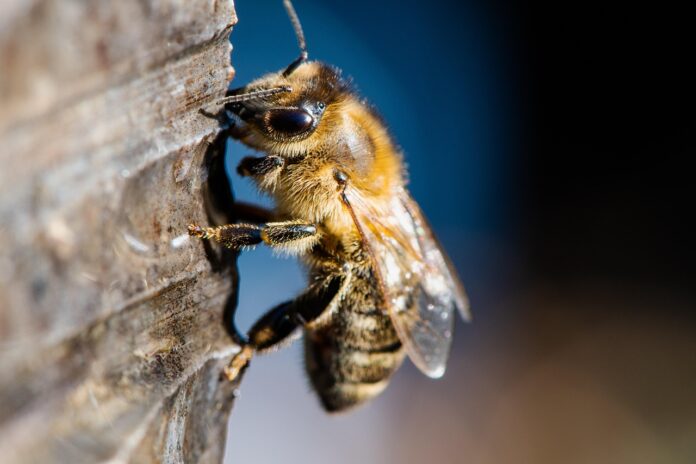New Testing Method Promises to Revolutionise Western Australia’s Honey Industry
A breakthrough in honey testing is set to transform Western Australia’s beekeeping landscape. The University of Western Australia (UWA) and its commercial partner Y‑Trace have unveiled the Total Activity (TA) test—a novel tool designed to measure the antibacterial properties of honey with unparalleled precision. This advancement is not only a boost for science but also a welcome development for WA’s premium honey producers, who have long relied on the region’s unique bioactive varieties, such as Jarrah.
A Leap Forward in Measuring Nature’s Defences
The TA test represents a significant stride in scientific methodology. Developed by Associate Professor Katherine Hammer of UWA’s School of Biomedical Sciences along with Y‑Trace CEO Dr Liz Barbour, the test employs a direct approach to quantifying honey’s antibacterial activity. In contrast to earlier techniques—where diffusion differences in honey components could cloud results—the TA test ensures that honey and bacteria are thoroughly mixed in a liquid medium. This innovation provides beekeepers with a robust and repeatable measure of how effectively their hives’ produce can inhibit bacterial growth.
Historically, assessments of antibacterial strength relied on techniques that often produced inconsistent results, limiting the ability to compare biological activity across different honey types. The TA test overcomes these challenges by delivering precise, instrument-based quantification. Such precision is particularly relevant given the array of bioactive properties that honey can exhibit, which include the production of hydrogen peroxide, the presence of phenolic compounds, and the naturally low pH that collectively contribute to its medicinal qualities.
The Science and Significance of Bioactive Honey
Honey’s antibacterial properties are well known, with components such as hydrogen peroxide and phenolic acids acting as natural defences. Western Australia’s bioactive varieties, notably Jarrah honey derived from the nectar of Eucalyptus marginata, have attracted attention for their high peroxide activity—sometimes reported to exceed that of even New Zealand’s famed Manuka honey. Yet, while Manuka’s marketability has largely depended on non-peroxide factors like methylglyoxal (MGO), WA honeys offer a distinct profile. Rigorous studies by UWA researchers have confirmed that specific local honeys can inhibit bacteria such as Staphylococcus aureus at relatively low concentrations, an insight that underscores the potential for these products in both local and international markets.
A Hub of Innovation for a Sustainable Future
The development of the TA test has come at an opportune moment for Western Australia. Supported by an Innovation Booster grant from the Department of Jobs, Tourism, Science and Innovation, the project aligns with a broader trend of fintech and agri-tech innovations from the region. WA has become a notable centre for agri-science, nurturing breakthroughs that range from drone-assisted pollination techniques to advanced biosecurity measures. By commercialising the new TA test, Y‑Trace—an offshoot of UWA’s Bee Research Centre—has positioned itself at the intersection of scientific research and practical application, further bolstering the state’s reputation for high-quality, environmentally sustainable products.
Economic and Policy Benefits for WA Beekeepers
Western Australia’s beekeeping industry contributes approximately $40 million annually to the state economy and is supported by nearly 500 commercial apiaries. One distinguishing factor for WA producers is the strict prohibition on antibiotic use within hives. The state’s regulatory environment, enforced under the Biosecurity Act 2019 and monitored by the Department of Primary Industries and Regional Development, has ensured that infestations of diseases such as European foulbrood—the scourge that pressures many overseas beekeeping operations—remain virtually non-existent. Consequently, WA honeys are marketed as inherently pure and antibiotic-free, a promise that regulators have reinforced with initiatives such as the “PureWest” certification.
The TA test dovetails nicely with these regulatory standards, offering a scientifically validated method that underscores the natural antibacterial activity of the product. Producers who can verify that their honey has not been exposed to antibiotics now have access to a tool that not only enhances consumer confidence but also offers a competitive edge in global markets increasingly demanding natural, high-quality products. In a world where consumer trends are increasingly leaning towards natural health solutions, accurate and repeatable testing methods provide honey producers an opportunity to position their products as premium and trustworthy.
A Global Perspective and Future Implications
The arrival of the TA test is of considerable interest not only locally but also on the international stage. Australia, currently ranked as the sixth largest honey exporter, faces stiff competition from countries like New Zealand—a leader in the medicinal honey market with its well-established Manuka grading systems such as MGO and UMF. However, the innovative approach offered by the TA test could set a new benchmark for antibacterial assessment, driving further differentiation and allowing Australian producers to articulate clear advantages over their global counterparts.
The necessity for such refined testing is underscored by the World Health Organization’s recent calls for standardised assays in the exploitation of natural products in medicine. As international markets begin to emphasise the need for transparency and consistency in product standards, the TA test offers a timely solution that could facilitate regulatory acceptance and bolster consumer trust.
Charting a Path Forward for Science and Industry
For researchers and industry stakeholders alike, the innovation behind the TA test is an inspiring example of successful academia-industry collaboration. Future research is expected to delve deeper into how precisely different botanical sources contribute to honey’s antibacterial profiles, potentially unlocking further applications in health and wellness products. This partnership also serves as a reminder of the importance of sustained investment in science and technology, which can yield benefits that resonate far beyond the laboratory.
Beekeepers and honey producers across Australia now have access to this state-of-the-art service through the Honey Lab at Y‑Trace. With testing that promises greater accuracy and reliability, the TA test is positioned to become a critical tool in the marketing and quality assurance arsenals of WA’s honey industry. This development heralds a new era of scientifically verified authenticity in a sector that has long been synonymous with quality and sustainability.
Sources:
• UWA Study on Jarrah Antibacterial Activity: https://www.uwa.edu.au/news/article/2023/june/honey-research-reveals-jarrahs-unique-properties
• WHO Guidelines on Honey Standardisation: https://www.who.int/publications/i/item/9789241513700
• DPIRD Beekeeping Statistics: https://www.dpird.gov.au/honeybee-statistics
• Australian Organic Market Report: https://austorganic.com/market-report/
• Jobs WA Innovation Booster Grants: https://www.jtsi.gov.au/grants/
• Y‑Trace ISO Certification Details: https://y-trace.com/services/honey-testing/

